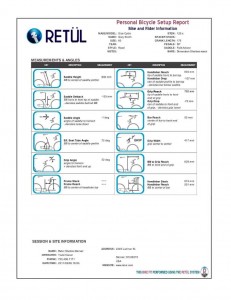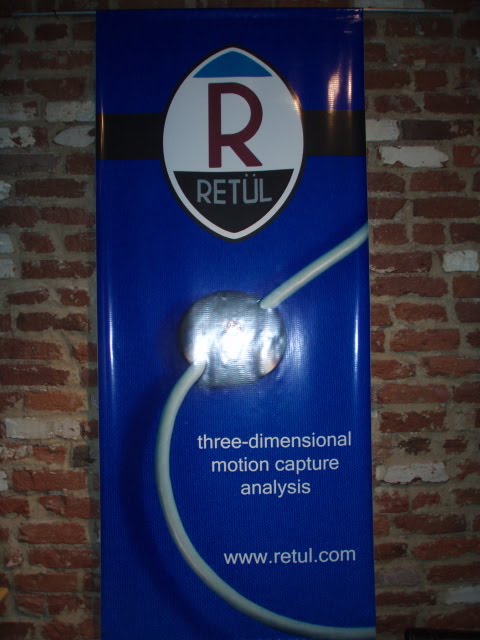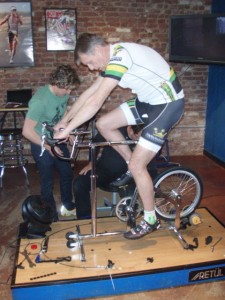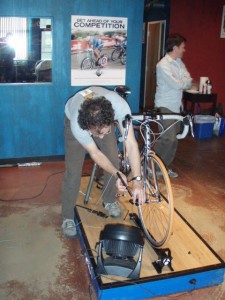Joining steel, titanium and carbon fiber tubes together to make a bike takes a lot of capability based on sound principles and science. Ensuring that it will properly fit the rider takes knowledge and science as well.
Just as we strive to continuously advance our frame building skills, we’ve recently taken steps to significantly upgrade our fitting and frame design capability. This upgrade began with bringing Jesse Fox on board to lead our design efforts. Jesse is a certified fitter and has many years of direct fit experience in top stores in NYC, Portland and DC. He has also been through several frame building schools so he can link both fit and fab skills together.
On the science side of the equation, modern technology has advanced to the point where much of the traditional intuition, and all of the guess work, can be taken out of the process. The leader in modern fit systems is the Retul 3D Motion Capture Fit System.
We recently purchased a complete Retul set-up, and Jesse and I spent three days at Retul’s Denver fit studio undergoing training and conducting actual fits on paying customers.
The Retul System utilizes light emitting diodes placed on the rider in specific anatomic locations to capture the full range of motion as the rider actually pedals their bike (or a size-cycle).
A bank of cameras captures the light and processes the data through sophisticated software to precisely measure all critical fit parameters in 3D.
When combined with power measurement, traditional physical assessments, and subjective rider input, it provides the most comprehensive and accurate gauge of rider fit and performance potential available anywhere.
The data provided on this comprehensive fit summary is more than sufficient to build a frame design in BikeCAD, which, when taken together with the riders desired ride qualities, will result in a custom build that rides and fits better.
 The system is also extremely helpful at dialing in the fit of an existing bike, albeit within the constraints of the existing bike’s geometry. Before making changes to the contact points of an existing bike through saddle height, fore/aft adjustments, etc., it is necessary to understand where the rider’s contact points are. Traditionally this involved lots of time and manual tape measurement.
The system is also extremely helpful at dialing in the fit of an existing bike, albeit within the constraints of the existing bike’s geometry. Before making changes to the contact points of an existing bike through saddle height, fore/aft adjustments, etc., it is necessary to understand where the rider’s contact points are. Traditionally this involved lots of time and manual tape measurement.Here Jesse is using the Retul Zin tool to electronically capture the exact geometry of an existing customer bike. The system captures all of the bikes measurements to be used in before/after comparisons. This greatly reduces the risk of operator error, especially considering the contoured shapes of modern carbon frames, which make it very difficult to get precise manual measures of existing frame center to center coordinates.
We are excited to be incorporating such an advanced and easy to use tool into our fit process, and look forward to helping customers design their custom dream bike, or better dial in the fit of the their existing bikes.
Jesse and I would like to thank Todd, Ivan and Holly at Retul for being great teachers and partners.
G











That is a fantastic addition!
But how do you simulate the fit and “full range of motion” as the rider is blasting down a tight singletrack, turning off camber switchbacks, powerclimb a steep section when sprinting right out of a berm? Just asking for interests.
Hey Prez, get yourself some sun.
Is really cool, in India Pharmacy there’s a friend that studied this years ago and he have made some stuff for fun in he’s house, once she showed to us and it was wonderful.